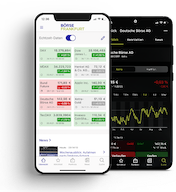"ETFs or actively managed funds – it's not an either/or situation"

The question “ETFs or active funds?” is a hotly debated topic, but one that is misleading. Ali Masarwah, fund analyst and managing director of financial services provider Envestor, explains why there is a happy medium.
2. June 2025. FRANKFURT (envestor): The question of how investors can optimally structure their portfolios is a challenge that many fail to overcome—even if they have taken the most important principles (“diversification,” “buy and hold,” “reduce costs”) to heart. I come to this question via a detour through another fundamental question: ETFs or actively managed funds. Investors have much to gain by resolving the apparent contradiction between ETFs and actively managed funds. Those who do so can tackle the really important questions: How do you invest in core markets, how do you invest in bonds and secondary markets?
When it comes to equities, ETFs are the instrument of choice for broad market coverage, especially for blue chips and large stock markets such as the US or Europe. They offer efficient, cost-effective access to the most important markets and enable investors to lay the foundation for a highly diversified portfolio with low fees. In these segments, ETFs have proven over the years that they are superior to the average actively managed fund – by a wide margin. That is why they are the default option here. Ideally, this is implemented at a bank or broker that offers permanently favorable trading opportunities, as well as with an ETF provider that continuously maintains its product range and does not frequently liquidate or merge ETFs.
However, the picture is different for emerging markets and bonds. This is where actively managed funds play to their strengths. Especially in complex markets such as Japan or emerging markets, ETFs are often not the best choice because they have structural weaknesses or do not adequately represent important market segments. High-quality, low-cost, actively managed funds can offer added value in these stock markets through targeted stock selection and flexible risk management.
However, actively managed funds have particular advantages when it comes to bonds. At first glance, ETFs also score points with liquid government bonds because of their low costs and efficiency. However, the supposed efficiency does most investors a disservice here, relativizing the cost advantages. Bond ETFs are usually rigidly structured according to maturity bands and debt weighting. This is often not expedient from the investor's point of view.
Before investors “buy the whole market,” they should critically reflect on whether Mr. Market is really always right. Those who answer this question in the negative are well served by actively managed bond funds. Another advantage of actively managed bond funds is that they can invest undisturbed in less liquid areas such as high yield, loans, CAT bonds, or subordinated bonds. They provide efficient access to attractive return opportunities that are mostly closed to ETFs due to the aforementioned market inefficiency and high liquidity requirements. Actively managed funds and ETFs—with a good mix, they are an unbeatable duo from an investor's perspective.
By Ali Masarwah, 2 June 2025, © envestor.de
About the Author
Ali Masarwah is a fund analyst and managing director of envestor.de, one of the few fund platforms that pays cashback on fund distribution fees. Masarwah has been analyzing markets, funds, and ETFs for over 20 years, most recently as an analyst at the research firm Morningstar. His expertise is also valued by numerous financial media outlets in German-speaking countries.
This article reflects the opinion of the author, not that of the editorial team at boerse-frankfurt.de. Its content is the sole responsibility of the author.

More articles from this columnist
| Time | Title |
|---|




